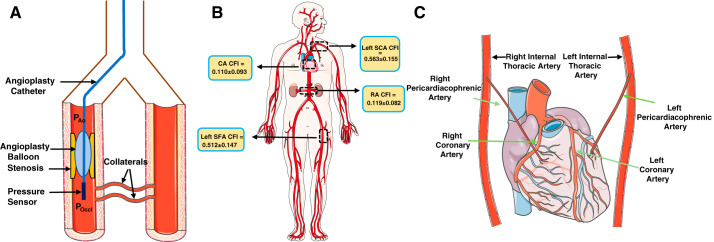Fig. 1.
Clinical aspect of coronary collaterals. A: schematic showing calculation of the collateral flow index (CFI). Pao, mean aortic pressure; Poccl, distal intracoronary occlusive pressure. CFI can be calculated as follows: (Poccl – CVP)/(Pao – CVP), where CVP is central venous pressure. B: CFI as calculated by Stoller et al. in different systemic arterial territories. CA, coronary artery; left SCA, left subclavian artery; RA, renal artery; left SFA, left superficial femoral artery. C: schematic showing the orientation of the right and left internal thoracic (mammary) arteries with respect to the heart. The internal thoracic arteries give rise to the pericardiacophrenic arteries, which supply blood to the heart. Stoller et al. (63) reported increased CFI (in the right CA) in patients whose distal right internal thoracic arteries had been closed permanently. This figure was created by modifying graphic elements freely available from Servier Medical Art (https://smart.servier.com/) under a Creative Commons Attribution 3.0 Unported License.

